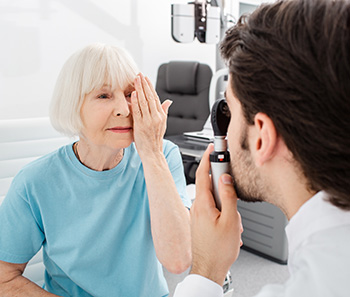

Diabetes and prediabetes are on the rise. Since 2020, more than 11 million Americans have been diagnosed with either diabetes or prediabetes.1 Combined, 133 million people in the U.S. are living with those chronic conditions.2
Consequently, that means the incidence of diabetes-related retinal disease (DRD) is also expected to increase. DRD, along with diabetes-related macular edema (DME), are the leading causes of visual impairment and loss in adults between the ages of 20 and 74.1 Both diseases can be prevented and/or delayed with regular eye exams.

An estimated 20% of people with diabetes first learn about their condition through an eye exam.3 A comprehensive eye examination should include:
Additional information for eye exams should include BMI (body mass index), nutritional concerns, and current medications.
Retinal fundus photography—a standard for DRD imaging—features a larger field of view that captures more of the retina and provides greater ability to observe peripheral changes. Providers can educate patients by reinforcing the importance of screening and follow-up care.
Note: Retinal photos are not a substitute for a comprehensive, in-person eye examination, and dilated eye exams should be performed at least initially and as recommended by an eye care professional (ECP).
After a diabetes-related eye exam, the ECP should communicate and share information with the patient’s primary care physician (PCP). The report should include the current stage of DRD, presence of DME, summary of retinal imaging results, telemedicine screening, and/or other diagnostic tests. Treatment and follow-up recommendations should be provided, along with a referral for the patient to see a retinal specialist, if appropriate.
A focus on ensuring better ocular outcomes requires cooperation and communication between both ECPs and PCPs, with practitioners aware of their shared patient’s overall medical status, and that by working together, they can enhance the quality of life for people with diabetes.
2 https://www.cdc.gov/diabetes/data/statistics-report/index.html 
3 https://www.ahip.org/news/articles/diabetic-eye-disease-from-diagnosis-to-treatment 
Highmark does not recommend particular treatments or health care services. This information is not intended to be a substitute for professional medical advice, diagnosis, or treatment. You should determine the appropriate treatment and follow-up with your patient. Coverage of services is subject to the terms of each member’s benefit plan. Additionally, state laws and regulations governing health insurance, health plans and coverage may apply and will vary from state to state.